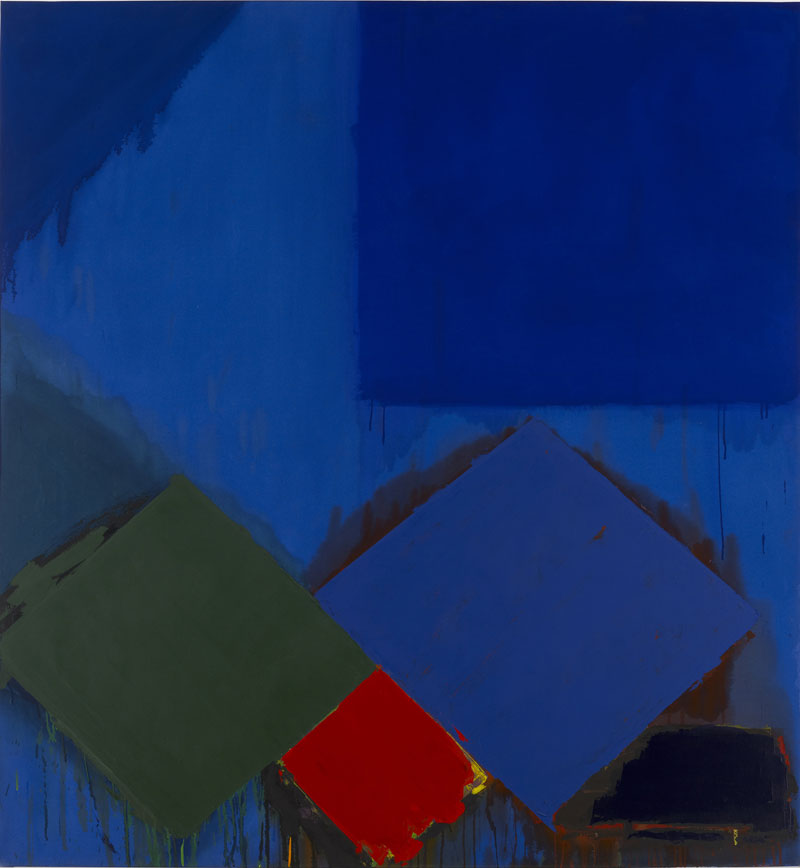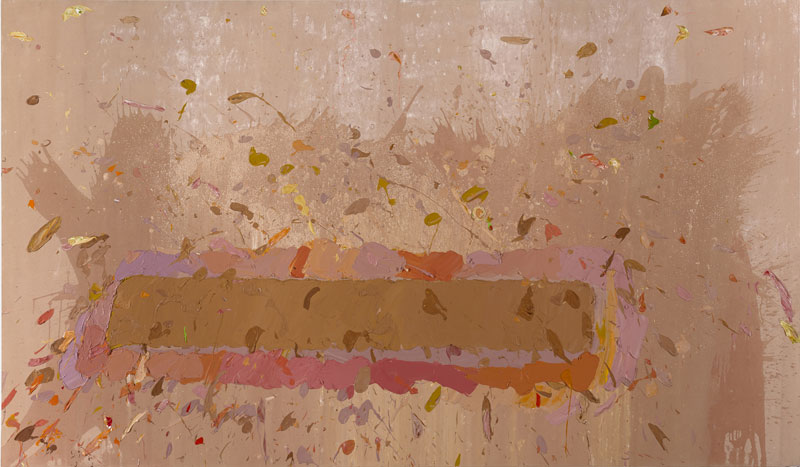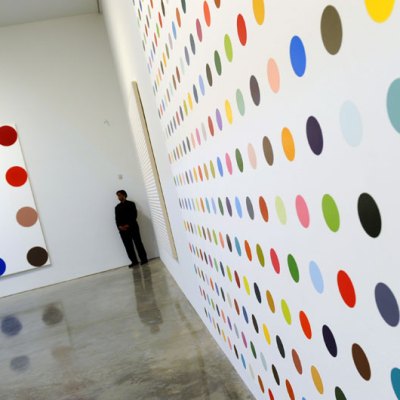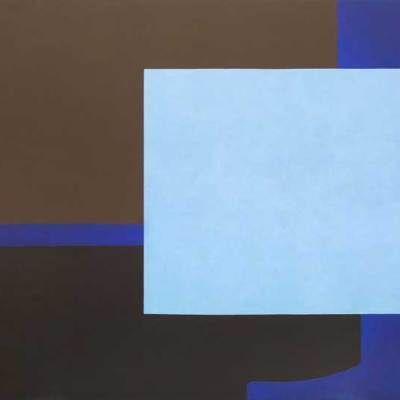As Tate Modern finally announces a launch date for its long-delayed extension, a more modest space is opening upriver. Damien Hirst’s Newport Street Gallery, built by Caruso St John at a cost of £25m, cannot compete in scale and ambition with the Bankside behemoth. Unlike Tate Modern, now boasting that its expanded capacity will allow it to feature over 250 artists from 50 countries, Hirst’s Lambeth gallery – designed to hold changing exhibitions of works from his Murderme collection – is sticking closer to home. It opens with a show of monumental abstract canvases by the late John Hoyland (1934–2011).
Ten years ago anyone running a book on Hirst’s likely choice of artist to inaugurate his private gallery would have given an abstract painter like Hoyland odds of 100–1. Yet Hirst has been bulk-buying his works since 2009, and the 33 paintings filling the gallery’s six large spaces are all from his own collection. It’s a heartwarming story. As a schoolboy the young Damien used to stand entranced in front of a Hoyland abstract in Leeds City Art Gallery, and he never forgot the impression it made. Despite Hoyland’s very public denunciation of the YBAs and all their works at the time of Sensation, when the two artists met in 2009 they got on like a house on fire. On the eve of Hirst’s disastrous painting debut that year at the Wallace Collection, he was photographed for RA magazine with his head resting filially on the shoulder of the man he proclaimed to be ‘easily the greatest British abstract painter.’
Hirst’s opinion is shared by Mel Gooding, author of a 2006 monograph on Hoyland, who described his oeuvre to critics at the exhibition preview as ‘unprecedented in British art in the 20th century’. Yet in recent years Hoyland has slipped so far off the radar that one critic for a major publication confessed to me that she’d never heard of him. The Tate owns 40 Hoylands. One is hanging in the British Art displays at Tate Britain; otherwise their only public outing in the past decade has been in a small exhibition at Tate St Ives in 2006. Is it too much of a risk for the Tate, with its eye on attendance figures, to promote exhibitions of abstract painting to a mass audience whose attention span has been shortened by the expectation that contemporary art should be either shocking or fun?
It’s an irony that it should be left to Damien Hirst to introduce a major British painter to British audiences. Until now, despite all the gory iconography, I never quite believed in Hirst’s Catholicism, but his latest incarnation as gallery-owner looks awfully like a bid for redemption. ‘What have I done? I’ve created a monster,’ he confessed in a recent Guardian interview. The bad boy of Britart who spoiled his audience’s appetite for paint on canvas with supersized servings of sensationalism is now trying to make them look again. His name will capture the public’s attention, but will it hold it for long enough for them to engage with a major survey of John Hoyland’s paintings? We may be about to witness a miracle on Newport Street.
‘John Hoyland: Power Stations 1964–1982’ is at Newport Street Gallery until 3 April 2016.






